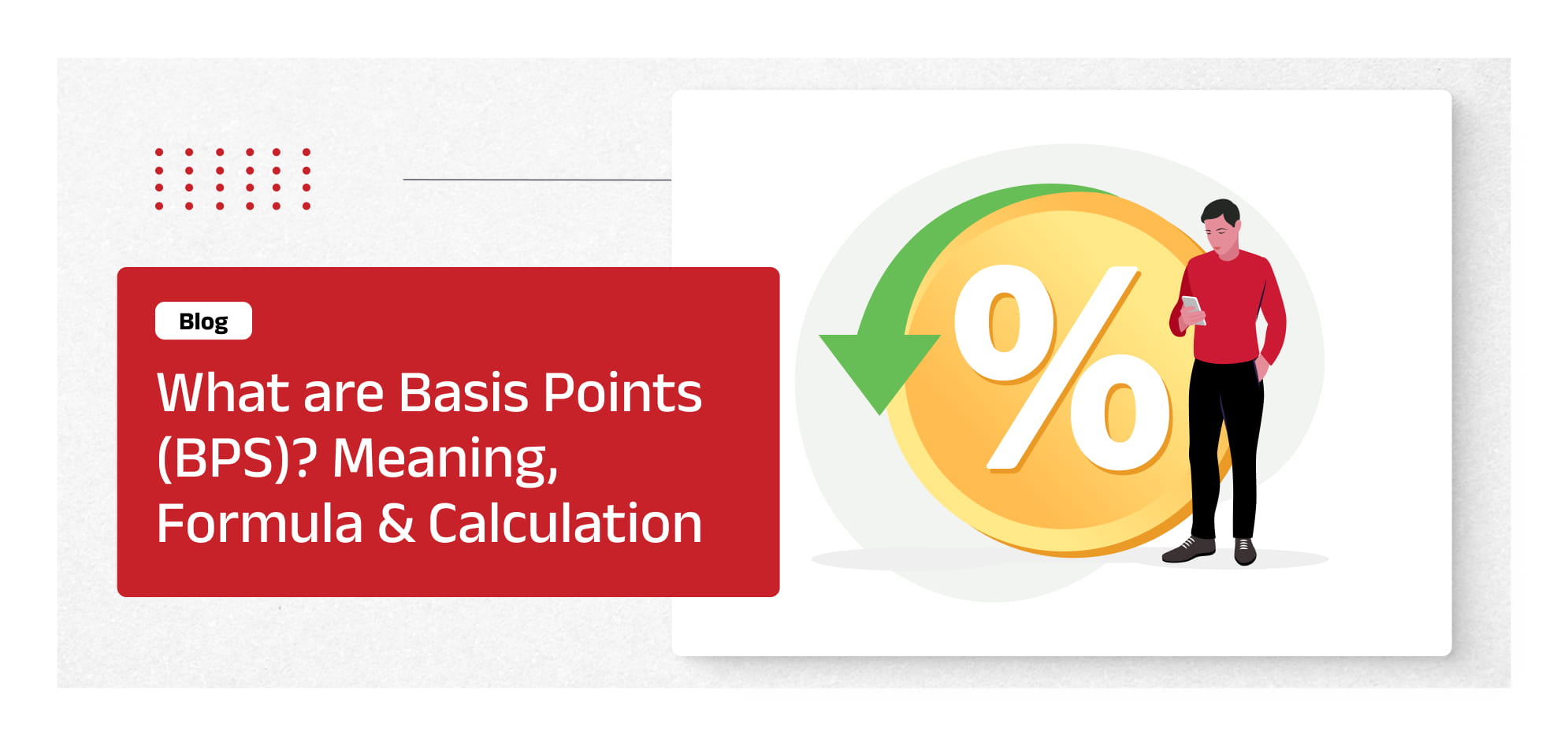-
Our Products
Our FundsFocus Funds
-
Self Care
Self-ServiceFind InformationWays To TransactPartner Solutions
-
Downloads
- Learnings
- About Us
-
More
-
Shareholders
-
Shareholders
-
Updates
-
-
SIP Calculators
- Back
-
Shareholders
What is Basis Point (BPS): What They Are and How They Are Used

Aug 29, 2025
5 min
0 Rating
If you are new to investing, you might not have heard the term basis point (BPS). BPS is a term which describes the small changes in interest rates, fees or investment returns. It actually is a simple concept that helps people understand small percentage changes clearly.
Understanding what a basis point is and how it works can help you better comprehend updates on financial and investment details. It removes confusion when discussing small changes that might otherwise seem tricky.
What is a Basis Point (BPS)?
The BPS full form is the basis point. A basis point is a unit used to show minor changes in percentages. It is mostly used in interest rates. One basis point is a very small unit that equals 0.01% or 0.0001 when written as a decimal.
For example, if a bank’s interest rate increases by 25 BPS, the rate has gone up by 0.25%. Using basis points makes it easier for you to find out the small changes. It helps prevent confusion by clearly showing the difference between decimals and percentages.
The word “basis” in BPS refers to the base difference between two percentages. Since financial rates often change in small amounts, basis points provide a clear way to express those changes.
How to Calculate Basis Points?
Calculating BPS is simple once you know how they relate to percentages. To change basis points into a percentage, just divide the basis points by 100. For example, 50 basis points is the same as 0.5%.
If you want to go the other way, then you can multiply the percentage by 100. Here, 0.75% equals 75 basis points. For instance, if a loan’s interest rate rises by 0.15%, it is equal to an increase of 15 basis points.
Remember, knowing the BPS full form can make many financial talks easier to understand. Also, understanding the BPS meaning helps simplify changes that might otherwise seem confusing.
Applications of Basis Points
Basis points pop up in many parts of finance. You’ll often hear about them when talking about bonds, whether government or corporate, to show changes in interest rates or yields.
Banks and credit card companies use basis points. It is used usually when explaining changes in loan or credit card interest rates.
Investment products like mutual funds often show their fees in basis points. This way, investors can clearly see what they’re paying for.
Stock market traders use BPS to describe small price changes. In financial markets, it measures the spread between different investments. Thus, traders can spot profit opportunities by buying low and selling high.
Even central banks use basis points when they announce changes to their key interest rates. It’s a simple, standard way to share important updates about the economy.
Getting to know the BPS full form will make it easier to understand how basis points are used. Learning the BPS meaning will help you follow financial news more confidently.
Common Misconceptions
Many people mix up basis points with percentage points, but they are different. BPS are not just for interest rates. They are used in fees, bond yields, investment spreads and more.
Basis points aren’t complicated. It is an easy way to show small changes clearly. Once you understand basis points, they become a helpful tool for following financial news and managing investments.
If you’re still wondering what BPS is, remember it simply shows tiny percentage changes that can affect your money in big ways. Knowing the difference between basis points and percentage points will help you communicate better about money matters. It also avoids mistakes that can happen when numbers are misread.
Conclusion
A basis point or BPS is an important term in finance. Knowing what a basis point is or what BPS is makes it easier to follow market updates and compare investment options.
Whether you are an investor or a borrower, understanding basis points is useful. It helps you explain percentage changes clearly and accurately. When you hear that interest rates have moved by a certain number of basis points, you’ll understand exactly what’s going on. This understanding will help you make wiser choices with your money and investments.
The information herein is meant only for general reading purposes and the views being expressed only constitute opinions and therefore cannot be considered as guidelines, recommendations or as a professional guide for the readers. The document has been prepared on the basis of publicly available information, internally developed data and other sources believed to be reliable. Recipients of this information are advised to rely on their own analysis, interpretations & investigations. Readers are also advised to seek independent professional advice in order to arrive at an informed investment decision.
Mutual Fund investments are subject to market risks, read all scheme related documents carefully.





 1800-270-7000
1800-270-7000



